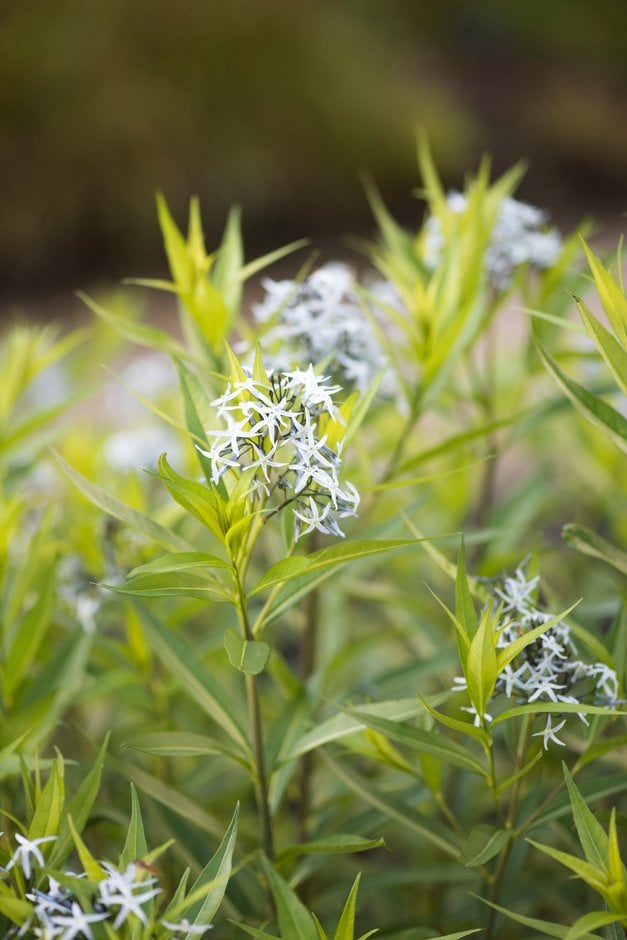Not the plant you're looking for? Search over 300,000 plants
Herbaceous Perennial
Size
Ultimate height
0.5–1 metresTime to ultimate height
2–5 yearsUltimate spread
0.1–0.5 metresGrowing conditions
Chalk
Clay
Loam
Sand
Moisture
Moist but well–drainedpH
Acid, Alkaline, NeutralColour & scent
| Stem | Flower | Foliage | Fruit | |
| Spring | Blue | Green | ||
|---|---|---|---|---|
| Summer | Blue | Green | ||
| Autumn | Green | |||
| Winter |
Position
- Full sun
- Partial shade
Aspect
South–facing or East–facing or West–facing
Exposure
Exposed or ShelteredDrought resistance
Yes Hardiness
H5Botanical details
- Family
- Apocynaceae
- Native to GB / Ireland
- No
- Foliage
- Deciduous
- Habit
- Clump forming
- Potentially harmful
- Harmful if eaten. Wear gloves and other protective equipment when handling Pets (dogs, cats): Harmful if eaten - see the HTA guide to potentially harmful plants for further information and useful contact numbers
- Genus
Amsonia are clump-forming perennials with milky sap, lance-shaped leaves and terminal panicles of small, starry blue flowers in spring and summer
- Name status
Correct
- Plant range
- C & E USA
How to grow
Cultivation
Grows best in fertile, moist but well-drained soil in full sun, although it can tolerate partial shade and is fairly drought-tolerant
Propagation
Propagate by seed sown in pots in a cold frame in autumn or spring. Alternatively propagate by division in spring or root softwood cuttings in early summer
Suggested planting locations and garden types
- Cottage and informal garden
- Prairie planting
- Flower borders and beds
Pruning
Cut back in late autumn
Pests
Generally pest-free
Diseases
Generally disease-free
Get involved
The Royal Horticultural Society is the UK’s leading gardening charity. We aim to enrich everyone’s life through plants, and make the UK a greener and more beautiful place.
